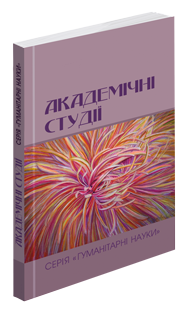Abstract
This paper focuses on the stylistic means and devices that contribute to the generation of pessimistic discourse in the 20th-century English prose. The study aims to identify the stylistic expressive means and devices employed by the authors to create the pessimistic tonality of narration. The study employs a convenience sampling method and content analysis to ensure the reliability and validity of the results. It has been carried out by using the Tropes V8.4 software which identified both direct (the lexical units designating the phenomenon of pessimism) and indirect (the contextual markers of pessimism) indicators of the pessimistic narration. It has been revealed that pessimistic utterances are constructed by the authors of literary works applying to the stylistic context, which highlights the internal emotional state of a pessimist, i. e. their feelings, emotional and behavioral reactions. The research identifies lexical-syntactic (simile) and syntactic (rhetorical questions, inversion, repetition, parallel constructions, interrupted sentences) stylistic devices implemented in the pessimistic utterances to express the pessimistic character’s worldview revealing the range of basic, adjacent, and related qualitative features of pessimism which create general emotional tension and increase the expressiveness of narration. It has been determined that lexical-syntactic and syntactic stylistic devices in pessimistic utterances refer to pessimism in its situational aspect, that is as a product of individual experience reflecting the expectation of a negative result in a specific situation involving certain adaptive actions. The study contributes to the development of linguistic semantics, communicative linguistics, and discourse studies by enriching the knowledge of idiostyles. The proposed methodology of the given research is considered promising within the framework of linguistic semiotics and psycholinguistics.
References
Грищенко А. П. Незакінчене речення. Українська мова: енциклопедія / за заг. ред. В. М. Русанівського; 2-ге вид., доп. Київ: Вид-во «Укр. енцикл.» ім. М. П. Бажана, 2004. С. 405–406.
Кухаренко В. А. Практикум з стилістики англійської мови: підручник. Вінниця: «Нова книга», 2000. 160 с.
Селіванова О. О. Сучасна лінгвістика: термінологічна енциклопедія. Полтава: Довкілля-К, 2006. 716 с.
Boichuk V., Yefremova N., Skrobaka Yu. Discourse specificity of non-cooperative strategies of pessimistic communicant. Академічні студії. Серія «Гуманітарні науки». Луцьк: Видавничий дім «Гельветика», 2021. Вип 2. С. 3–14.
Carver C. S., Scheier M. F., Segerstrom S. C. Optimism. Clinical Psychology Review, 2010. № 30. P. 879–889.
Fox K. L. Watching the English. The Hidden Rules of English Behaviour. Hodder & Stoughton, 2005. 424 p.
Rombach M. An Analysis of Optimistic and Pessimistic Language in Earnings Press Releases. GRIN Verlag, 2011. 17 p.
Schopenhauer A. The Essays of Studies in Pessimism. Full Moon Publications, 2015. 74 p.
Volkova S., Boichuk V., Pavliuk A., Yefremova N. Linguistic and semiotic representation of pessimism in The Happy Prince and Other Tales by Oscar Wilde. East European Journal of Psycholinguistics, 2023. 10(1), P. 281–298. https://doi.org/10.29038/eejpl.2023.10.1.vol

